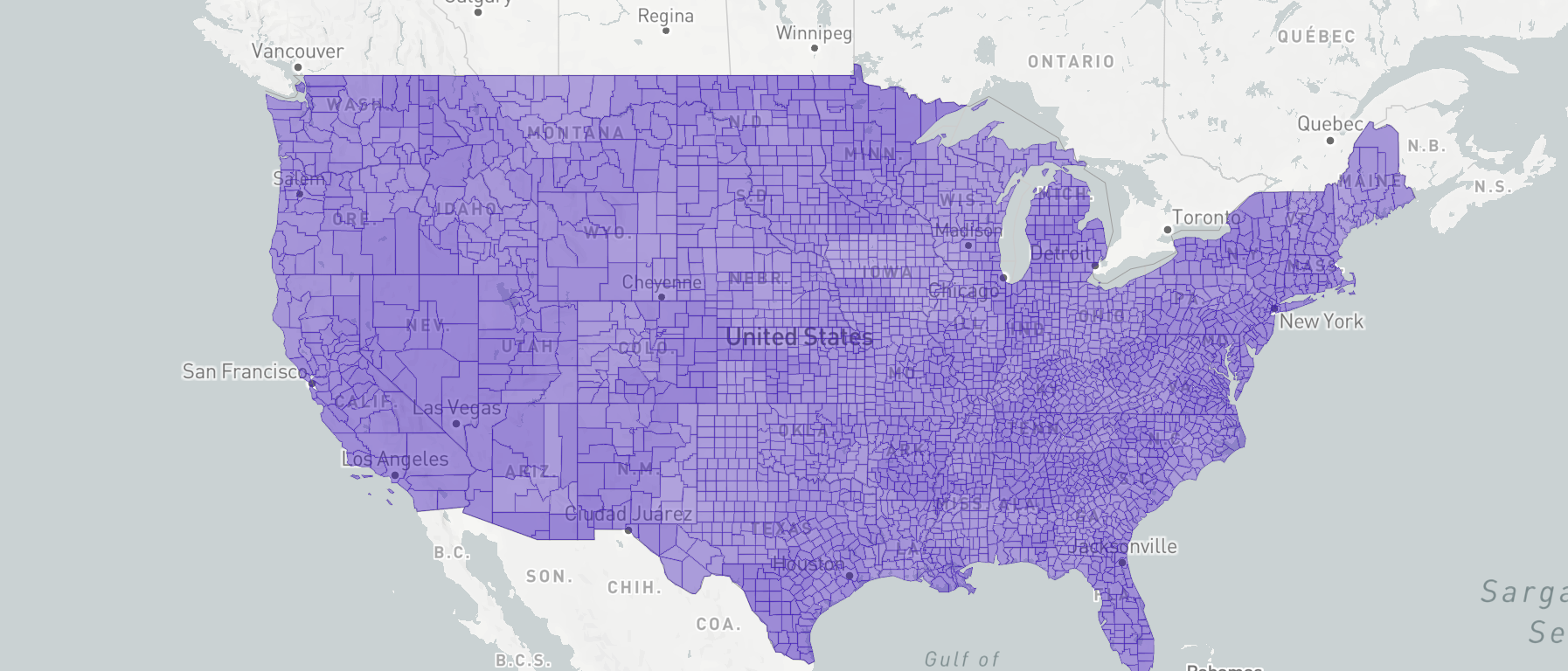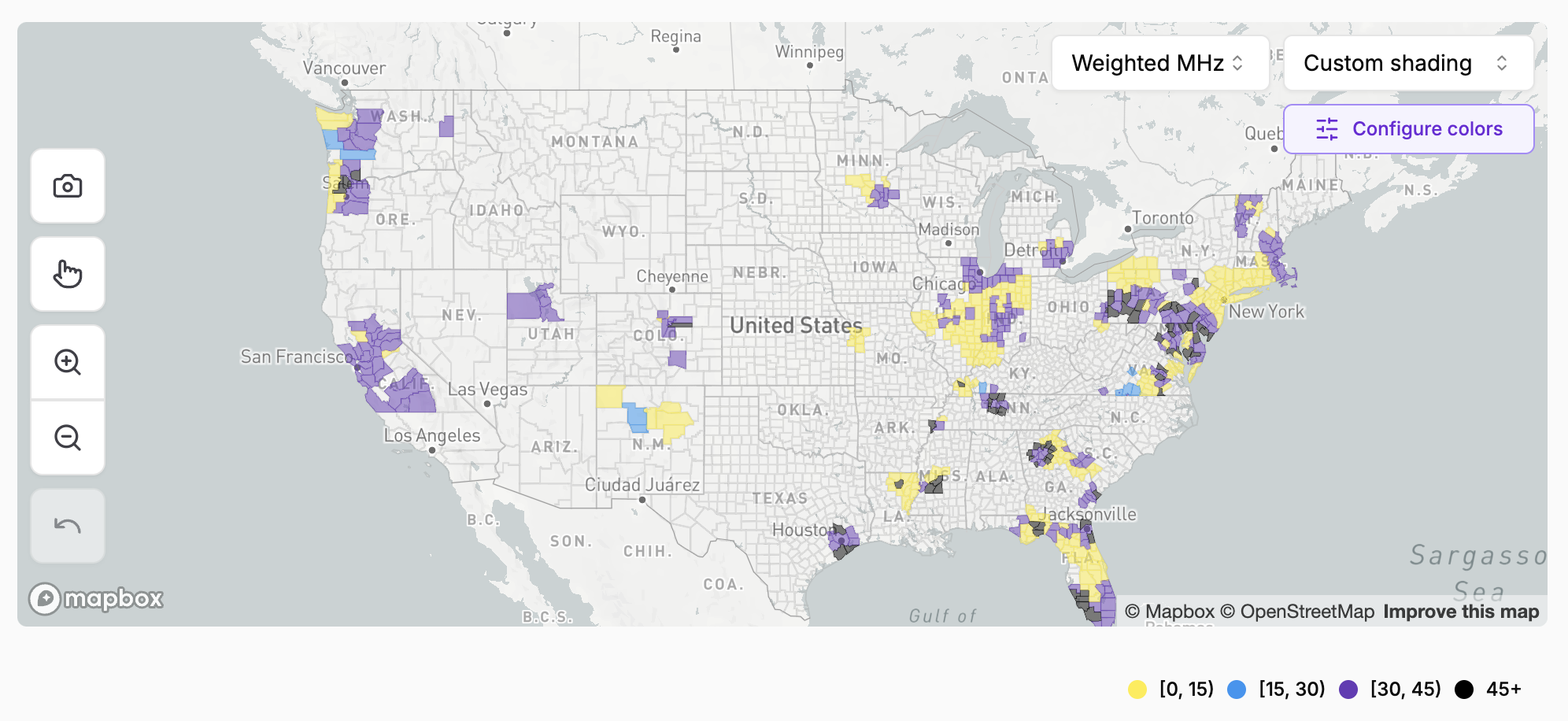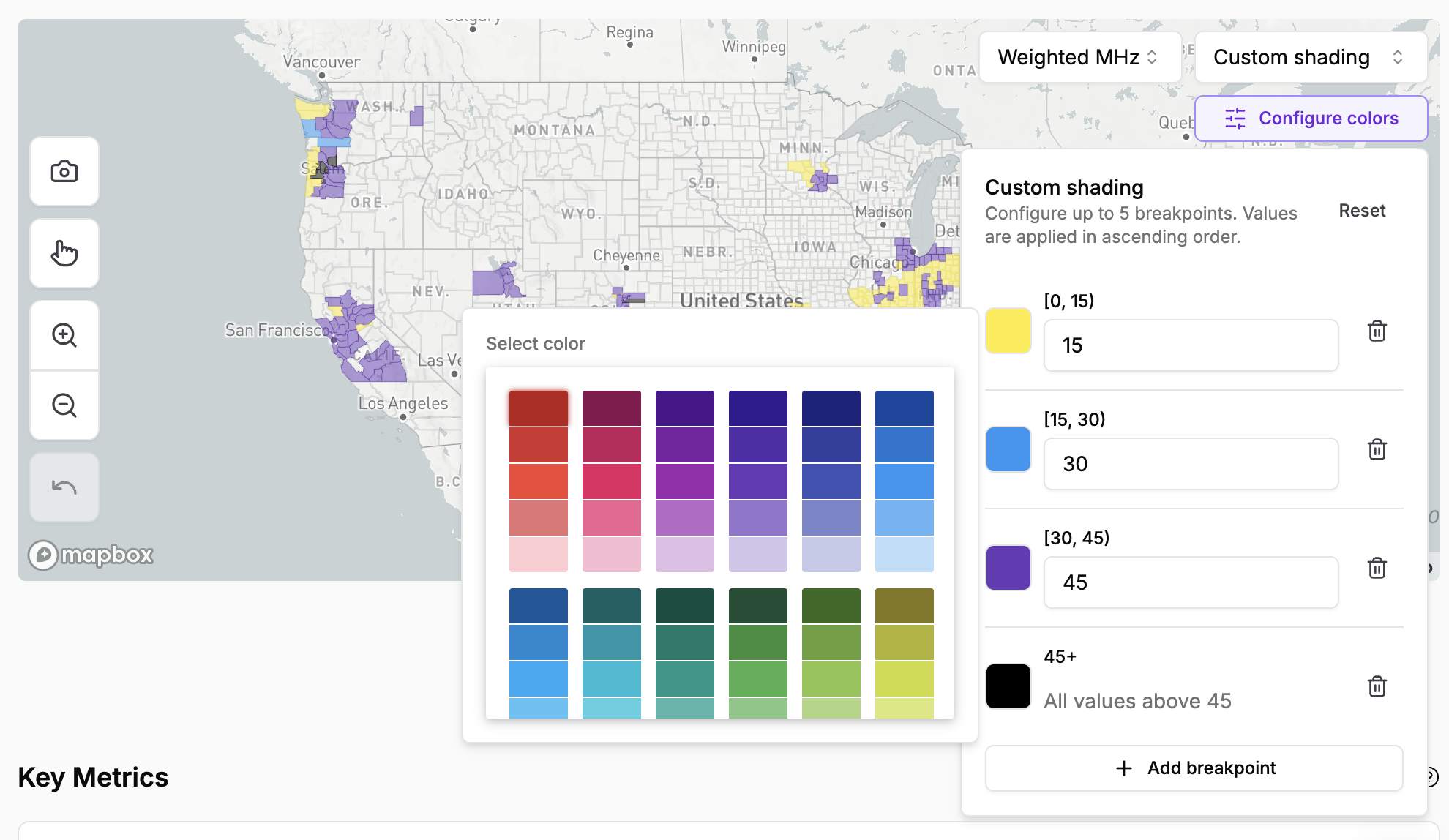Improving Map Readability with Discrete Color Intervals

Mapping is a core functionality in Airwave Research. Since the FCC licenses frequencies over specific geographic footprints, representing the data through maps is often far more effective than tabular visualizations. Maps are also great for interactiveness, affording users the option to click on or zoom in on a portion of the map to narrow down their search.
From the beginning of Airwave's development, we have relied on a continuous shading function to color heatmaps on the platform. See example below:

The shading function works by identifying the minimum and maximum values on the map and applying a color to each boundary: lighter colors signify lower values, and darker colors represent higher values. For most situations, the shading function proved effective at conveying differences between boundaries. However, in certain situations, the shading was minimal, which made it difficult to interpret the map. See example below:

The difficulty arises because some maps contain outliers that the shading function still needs to support, but this means that the vast majority of colors fall within a short range of shading, making the discrepancy almost imperceptible. We could update our shading function so that we weight the shade changes against some distribution of values in the heatmap. For example, with a normal distribution, heatmap values closer to the mean would have more perceptible differences in shade. However, this type of coloring function still makes assumptions about the dataset's distribution, and the increasing complexity of the shading algorithm would require users to reason about the magnitude of differences in shade, even with a legend in place.
Instead, we determined that discrete color boundaries would provide users with high contrast maps, making it easy to identify regions that match each interval range. See the example below for a map of Comcast's depth of spectrum nationwide:

Controls are also available to customize the maps. Users can define each interval range and then specify the colors. By default, we display four colors on the map with equal-sized ranges.

Discrete coloring is particularly effective when comparing holdings between companies by using fixed intervals. Discrepancies that were difficult to identify before are now made obvious.
This feature is now available in the Portfolio Explorer. Please try it out and let us know your thoughts.
Authors
Zev Stravitz